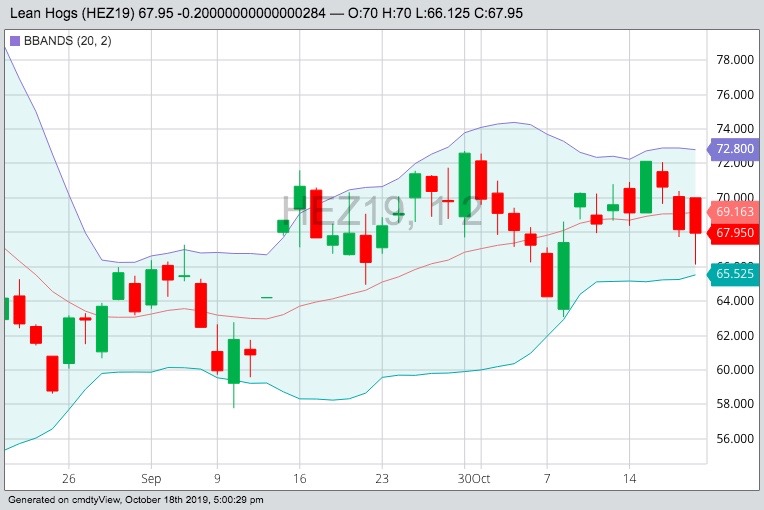Chicago | Reuters — U.S. lean hog futures closed lower on Friday after a roller-coaster session in which prices jumped on news of massive weekly pork export sales, only to turn down after the U.S. Department of Agriculture (USDA) said its figures could include pork sold in previous weeks.
Toward the close, lean hog futures on the Chicago Mercantile Exchange pared losses as traders exited short positions, traders said.
CME December lean hog futures settled down 0.2 cent at 67.95 cents/lb. after trading in a nearly four-cent range, from 66.125 cents to 70 cents (all figures US$).
Read Also

Alberta crop conditions improve: report
Varied precipitation and warm temperatures were generally beneficial for crop development across Alberta during the week ended July 8, according to the latest provincial crop report released July 11.
Lean hog futures opened sharply higher after USDA reported export sales of U.S. pork in the week to Oct. 10 at 292,161 tonnes for 2019, a high for the year, including record-large weekly sales to China and Mexico.
However, in a note on its website, USDA said its total pork sales for Oct. 4-10 included “a significant quantity” that might have been sold in previous weeks.
Traders said USDA’s note suggested the high weekly sales figure was an aberration.
“We’ve got huge (domestic hog) production. If we are not going to get another week of sales numbers anywhere near like this, (and) this is a one-off, then let’s sell. That’s the rationale,” said Dan Norcini, an independent livestock trader.
Hog futures pared losses late in the day as the mixed signals from USDA, along with uncertain prospects for a U.S. trade deal with China, prompted traders to cover short positions.
“The talks between (U.S. President Donald) Trump and Xi (Chinese President Xi Jinping) are still very much a work in progress, so how much risk do you want to take over the weekend?” said Don Roose, president of Iowa-based U.S. Commodities.
CME live cattle futures fell on weaker cash cattle prices in Texas and Kansas along with profit-taking after a month-long rally, traders said.
Traders said cash cattle traded in Texas and Kansas on Friday as low as $108/cwt, down about $2-$3 from a week earlier and below expectations earlier in the week.
CME December live cattle futures settled down 0.75 cent at 113.625 cents/lb., and November feeder cattle futures fell 1.475 cents to end at 142.85 cents/lb.
Additional pressure stemmed from fears that an explosion at a Cargill beef plant in Kansas might back up cattle supplies at feedlots.
Cargill stopped receiving cattle for slaughter at the Dodge City plant after Thursday’s incident but it expects to resume early next week, a company spokesman said Friday. Cargill is working with its other plants to receive cattle and meet customer commitments, the spokesman said.
Traders were jittery following an August fire at a Tyson slaughterhouse in Holcomb, Kansas, that shut that facility indefinitely, jarring futures markets.
— Julie Ingwersen is a Reuters commodities correspondent in Chicago.




















